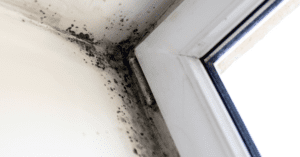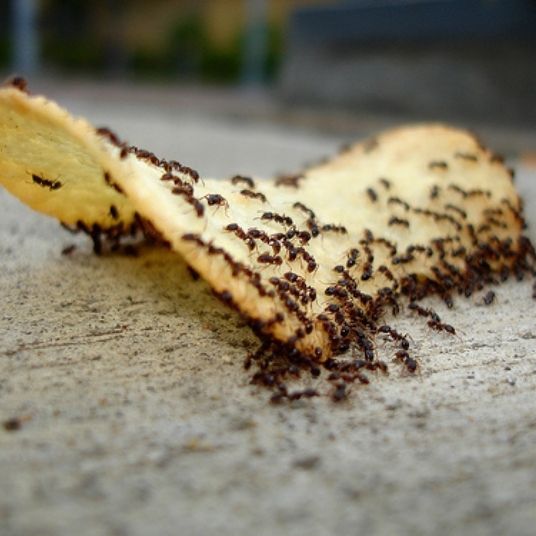
The Relationship Between Pests and Mold in Homes
Discover the hidden link between pests and mold in homes. Learn how they coexist and how to prevent these health hazards effectively.

Common along garage sides, house perimeters, and structures on concrete slabs.
Eats a variety of substances, including insects, seeds, honeydew, and human food scraps.
Complete metamorphosis from egg to larva to pupa to adult; colony growth varies from months to years.
Pavement ants, scientifically recognized as Tetramorium caespitum, are common across all regions of Canada. They typically establish their colonies under sidewalks, driveways, and building foundations. These ants are well-adapted to urban environments, forming large, noticeable colonies that can quickly become a nuisance in residential and commercial areas. Known for their resilience, pavement ants thrive in close proximity to human activities, making them a persistent issue in populated areas.
Pavement ants create significant nuisances due to their nesting habits under pavements and building foundations, which can compromise structural integrity. Their large-scale territorial battles disrupt human activities, and their ability to contaminate food poses serious health risks. The presence of pavement ants indoors during colder months as they seek warmth and sustenance can lead to persistent infestations and potential contamination of food supplies.
Pavement ants are small, typically measuring between 2.5 to 3 mm in length, and vary in color from pale brown to black. They are distinguished by their grooved heads and thoraxes and a pair of spines on the thorax. Recognizable by their well-defined trails and displaced soil mounds along pavements, these ants are particularly visible during their nuptial flights in late spring and early summer, which helps in their identification and monitoring.
Although pavement ants are not known to cause structural damage like some other pests, they can become a serious issue due to their potential to contaminate food and spread germs. Their capability to establish large colonies quickly and to return each season can make infestations difficult to manage without professional help. Immediate and effective management is essential to prevent them from becoming an ongoing problem.
Pavement ants are attracted to environments that provide them with easy access to food and shelter. Commonly, they infiltrate homes through tiny openings around windows, doors, and cracks in foundations. They are drawn to food residues, pet food, and garbage, making any unsealed or accessible food source a potential attractant. Managing these access points and food sources is crucial to preventing their entry and subsequent infestation.
Preventing pavement ants involves meticulous sealing of all entry points around the home, such as cracks around doors, windows, and foundations. It is also important to maintain cleanliness, especially in food preparation areas, and to ensure that trash cans are securely covered. Pruning overhanging trees and shrubs to prevent contact with the structure can reduce the risk of ant bridges. Regular inspections can identify early signs of infestation, allowing for prompt action.
Pestcheck’s initial inspection for pavement ants meticulously examines all areas where these ants are likely to colonize, including pavements, foundation edges, and under slabs. Our experts identify trails and nests, using specialized techniques to ensure no infestation is overlooked. This thorough inspection forms the foundation of our targeted treatment plan, customized to your property’s specific needs.
At Pestcheck, we use environmentally responsible treatments to target pavement ants inside and outside your home. Our safe baits and non-repellent insecticides are applied directly to trails and nests, disrupting the ant lifecycle. This comprehensive approach eliminates current infestations and establishes barriers to prevent future colonies, ensuring effective, sustainable protection for your property while prioritizing the health of your family and pets.
Pestcheck ensures lasting control over pavement ants with scheduled follow-up visits. These sessions are crucial for assessing the success of our initial treatments and detecting any new ant activity. Our proactive approach adapts to changes in ant patterns and reinforces defensive measures, maintaining an ant-free environment and providing consistent protection throughout the year.
Looking closely, you might be able to see the grooves on the pavement ant’s head and thorax. They are approximately 1/8” long (the size of a piece of rice) and are dark brown or black. Pavement ants prefer to stay outdoors, especially beneath flagstone patios and sidewalks.
Check out our blogs and articles to learn more about keeping your home pest-free and your family and pets safe! We’re sharing our expert advice and latest news from behind-the-scenes.

Discover the hidden link between pests and mold in homes. Learn how they coexist and how to prevent these health hazards effectively.

In the food service industry, maintaining high standards of hygiene and food safety is paramount to ensuring customer satisfaction and preventing health risks. However, one significant challenge that establishments face

As our loved ones transition into their golden years, our foremost concern revolves around ensuring their health and comfort. Yet, within the nurturing ambiance of senior living spaces, an often-overlooked

In the life of the modern homeowner, the possibility of a pest emergency is a crisis that often goes overlooked. Pests such as rodents, insects, and various other critters can

Pest infestations often bring to mind images of messy households, but the truth is no premises are exempt, including sparkling clean offices. Pest invasion poses not only health risks but

Pests can be a nuisance in both homes and gardens, causing damage to plants, infesting living spaces, and posing health risks. While traditional methods of pest control often involve the

Pest control is an essential aspect of maintaining a healthy and comfortable home. However, traditional pest control methods often rely on chemical pesticides that can have negative effects on the

When it comes to pest control, timing is everything. With the right strategy and schedule, a homeowner can keep their home free from pests year-round. But focusing pest control efforts

Pest control is an important aspect of maintaining a healthy and clean living environment. It involves the use of various methods to control or eliminate pests such as insects, rodents,